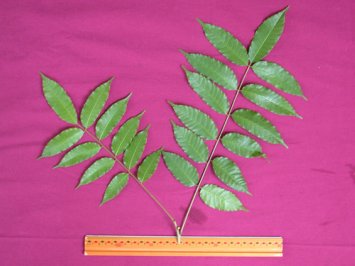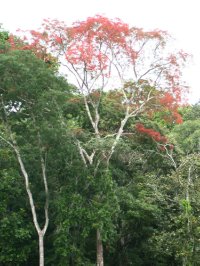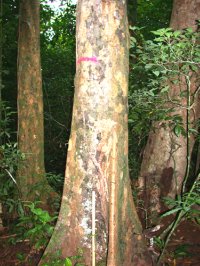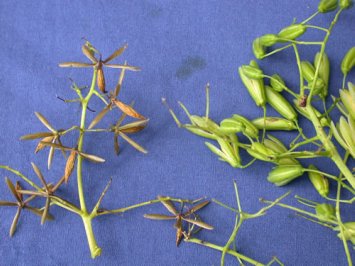Technical Data about Tigerwood Hardwood:
Downloads
Family
Genus
Species Scientific Names
Distribution
Habitat
Tigerwood is an exotic deck wood found at altitudes ranging from 500 to 3,000 feet, but is most common at 1,500 to 1,800 feet in both dry and humid forests. It does not tolerate saturated or heavy clay soils but grows well in poorly drained limestone or rocky and alluvial soils. Best growth is obtained on lighter soils with less than 40% clay, neutral pH and good drainage. In most of its range it is considered one of the major canopy species in both primary and secondary forests. It is a sub canopy species in marginal lowlands or very high elevations. It is considered a good candidate for alternative decking materials, because of its sustainability using plantation farming – with easy germination, a wide habitat range and 35 to 45 year merchantable harvest rotations.
Botanical Description
Tigerwood Heartwood Description
Color when fresh is light orange to reddish brown and is more or less conspicuously marked with vertical blackish bands of variable spacing. Tigerwood wood often has a variegated grain appearance, which produces a very striking and beautiful mottled figure. Continuous unprotected exposure to sunlight turns the color more reddish and accentuates the black striping but eventually turns it a uniform silver-grey. The grain varies from straight to intercrossed; the texture is fine and homogenous; and the luster generally high. Wood cells are relatively square, small and medium to very thick-walled. There are few to minor mineral inclusions with silica generally absent. Tigerwood wood products are very heavy, with a basic specific gravity of .75 to .79. The green weight is 5,500 to 5,700 lbs per thousand board feet and 3,400 to 3,550 lbs per thousand board feet at 12% moisture content. Tiger Deck products are dried to 7-9% moisture content and weigh 2,750 lbs per thousand board feet on a nominal basis.
Requirement of a Preservative Treatment
End Uses Listed in Descending Order by Historical Volume Used
1. Structural Carpentry
2. Bridge Construction
3. Cabinetry
4. Sliced Veneers
5. Flooring
6. Exterior Joinery
7. Interior Joinery
8. Indoor Furniture
9. Boat Carpentry
10. Marine Piling and Carpentry
11. Outdoor Furniture
12. Porches and other Outdoor Decking
13. Tool Handles
14. Musical Instruments
15. Sculpture

The Tree Leaf

The Tree in Full Bloom

The Tree Trunk
